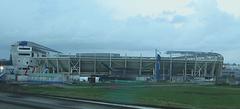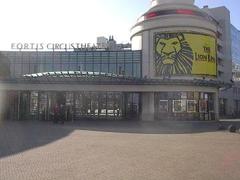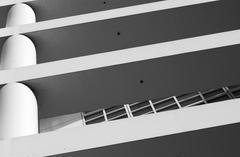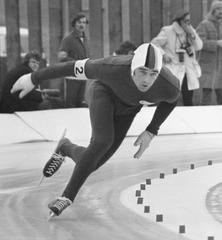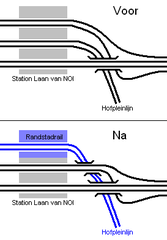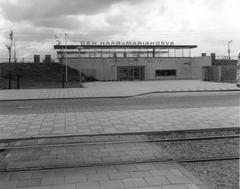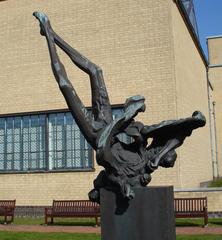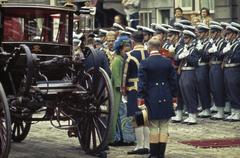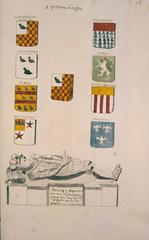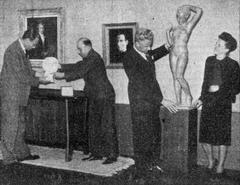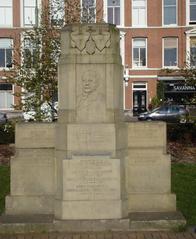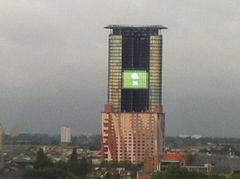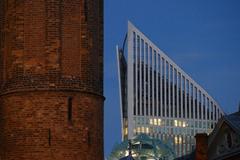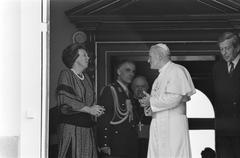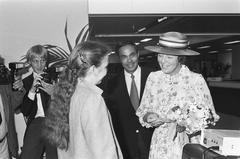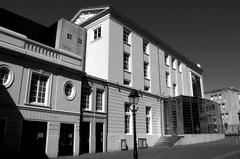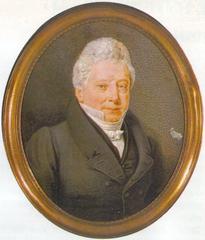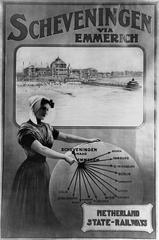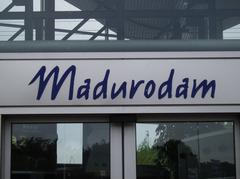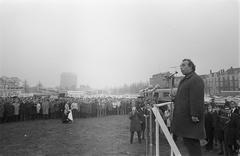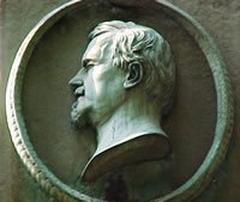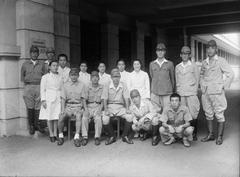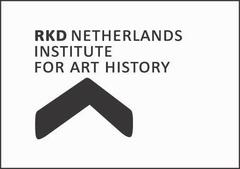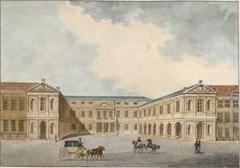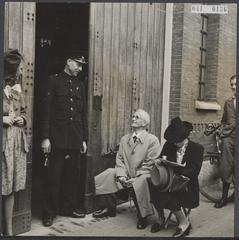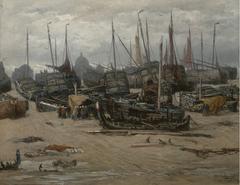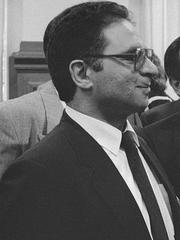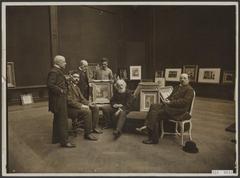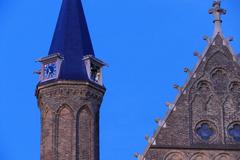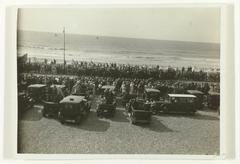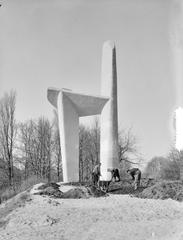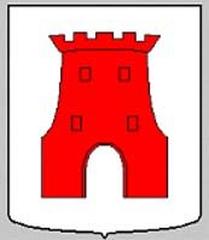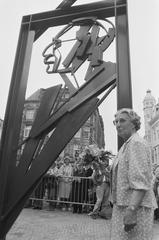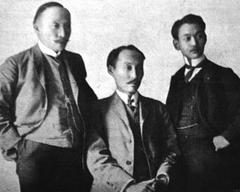
Leidschenveen Visiting Hours, Tickets, and Top Attractions in The Hague
Date: 04/07/2025
Introduction to Leidschenveen and Its Historical Significance
Leidschenveen stands as The Hague’s youngest district, offering a compelling destination for those interested in a harmonious blend of ancient history, modern urban design, and cultural diversity. Located in the city’s eastern corridor, Leidschenveen is distinguished by remarkable archaeological finds dating back to around 3800 BCE. These Neolithic settlements and burial fields, uncovered during recent urban development, provide a rare window into prehistoric life and contribute a unique layer to the district’s contemporary character (atriumcityhall.nl; stroom.nl).
Originally farmland within Leidschendam, the area underwent rapid transformation following the 1990s VINEX housing policy, which was implemented to address urban population growth. After its annexation by The Hague in 2002, Leidschenveen evolved into a spacious, green, and family-friendly neighborhood, characterized by modern architecture and excellent connectivity—including the Den Haag Ypenburg railway station (denhaag.nl; thehagueinternationalcentre.nl).
While the district is primarily residential and does not feature traditional tourist attractions with ticketed entry or set visiting hours, Leidschenveen invites exploration through its public parks, innovative artwork such as Michael Rakowitz’s “Be longing,” and community landmarks like the city farm Landzigt. Visitors can enjoy a thoughtfully planned urban landscape and engage with a vibrant, multicultural local community.
This comprehensive guide provides travelers with practical information on visiting Leidschenveen—including transport, amenities, accessibility, and local events—while highlighting its unique role as a district where ancient history and modern life converge. For those keen to explore beyond The Hague’s well-known attractions, Leidschenveen promises a culturally rich, off-the-beaten-path experience (atriumcityhall.nl; studyinthehague.com; dutchreview.com).
Table of Contents
- Discover Leidschenveen: A Unique Blend of History and Modern Living
- Early Habitation and Archaeological Significance
- From Rural Outskirts to Urban Integration
- Administrative Changes and Urban Expansion
- Urban Design and Livability
- Infrastructure and Connectivity
- Social and Cultural Evolution
- Visiting Leidschenveen: Practical Information
- Frequently Asked Questions (FAQ)
- Getting to Leidschenveen: Transport and Accessibility
- Visitor Amenities in Leidschenveen
- Special Events, Guided Tours, and Photographic Spots
- Practical Tips for Visitors
- FAQ
- Summary Table: Key Visitor Information
- Visuals and Media Suggestions
- Internal and External Links
- Conclusion
Discover Leidschenveen: A Unique Blend of History and Modern Living
Leidschenveen’s story is one of remarkable transformation. Once rural farmland, it is now a showcase of Dutch urban planning, blending archaeological depth with modern amenities and green spaces. Although not a conventional tourist hotspot, the district offers a wealth of experiences for history enthusiasts, urban explorers, and families.
Early Habitation and Archaeological Significance
Archaeological research during Leidschenveen’s development uncovered evidence of habitation dating back to the Neolithic era—around 3800 BCE. This includes settlements and burial fields discovered through soil analysis and wooden pole traces, indicating early life along the dunes (atriumcityhall.nl). Recent finds near Molenvlietpark, such as ancient pottery fragments, are being reconstructed, making the area’s prehistoric legacy tangible to today’s residents (stroom.nl).
From Rural Outskirts to Urban Integration
Leidschenveen’s transformation began when the Dutch government introduced the VINEX policy in the 1990s to alleviate housing shortages. Together with Ypenburg and Forepark, it was earmarked for large-scale residential development (atriumcityhall.nl; en.wikipedia.org). Construction started in 1996, with new neighborhoods such as Velden and Waterland, followed by De Lanen, De Dijken, and ‘s-Gravendreef, rapidly establishing a modern urban community.
Administrative Changes and Urban Expansion
On January 1, 2002, Leidschenveen, along with Ypenburg, Hoornwijk, and Forepark, was officially annexed by The Hague, creating the Leidschenveen-Ypenburg district (atriumcityhall.nl; en.wikipedia.org). The district includes Rietbuurt, De Vissen, De Velden, De Lanen, and De Rivieren, and is home to over 20,000 inhabitants as of 2025 (thehagueinternationalcentre.nl; denhaag.nl).
Urban Design and Livability
Leidschenveen’s layout reflects VINEX planning principles: spacious, green, and highly livable. Wide streets, integrated parks, and water features enhance the environment. Landmarks include the Landscheidingsdijk, A12 motorway, and Westvlietweg, which define the district’s boundaries (denhaag.nl). Facilities such as the Leidschenveen Library, city farm Landzigt, and various sports amenities foster a vibrant community.
Infrastructure and Connectivity
The district boasts excellent transport links, with the A4 and A12 motorways nearby and direct public transport via Den Haag Ypenburg railway station. The 2021 opening of the Rotterdamsebaan has further improved accessibility and supports cultural projects like Michael Rakowitz’s “Be longing” at Molenvlietpark (stroom.nl).
Social and Cultural Evolution
Leidschenveen is home to a diverse community, including Dutch families, international residents, and migrants, reflecting the multicultural fabric of The Hague. Community organizations such as Bewonersorganisatie Leidschenveen (BOL) promote inclusivity and local engagement (denhaag.nl). Cultural initiatives, like Rakowitz’s “Be longing,” underscore the district’s commitment to celebrating its layered heritage (stroom.nl).
Visiting Leidschenveen: Practical Information
Leidschenveen does not require tickets or have official opening hours; its parks and community spaces are open to all. Occasional guided tours and archaeological exhibitions are announced by local platforms and organizations.
Travel Tips:
- Arrive via Den Haag Ypenburg station for easy access.
- Extensive bus, tram, and motorway connections.
- Family-friendly amenities and well-maintained green spaces.
Getting to Leidschenveen: Transport and Accessibility
Public Transport Connections
Leidschenveen is easily reached by public transport. RandstadRail lines 3 and 4, as well as NS Sprinter trains, connect the district to Den Haag Centraal, Zoetermeer, and Rotterdam (HTM). Tram line 4 links the city center to Leidschenveen in about 15 minutes. The OV-chipkaart is valid on all public transport; cards can be purchased at stations and topped up at service points (Study in The Hague).
Road Access and Parking
Accessible via the A4 and A12, Leidschenveen also benefits from nearby Park & Ride (P+R) facilities such as Hoornwijck and De Uithof, providing affordable parking with tram connections (Parkimeter). Check local regulations for free parking times and blue zone requirements.
Cycling and Pedestrian Access
The Hague’s renowned cycling infrastructure extends to Leidschenveen, with dedicated bike lanes and safe crossings. Bicycle rentals are available at major stations. The district’s flat, green layout is ideal for both cycling and walking, making self-guided tours easy and enjoyable.
Visitor Amenities in Leidschenveen
Shopping and Daily Needs
Winkelcentrum Leidschenveen serves as the commercial heart of the district, with supermarkets, bakeries, pharmacies, and specialty stores. For an expanded retail experience, the Mall of the Netherlands is a short distance away, offering over 230 shops and diverse dining (Mall of the Netherlands).
Dining and Refreshments
Leidschenveen features a variety of cafés and eateries, including international cuisines and traditional Dutch snack bars. The Hague city center, only a tram ride away, offers a broader culinary landscape, from street food to fine dining.
Public Facilities and Services
- Public Toilets: Available in shopping centers and community venues.
- ATMs and Banking: Located in main shopping areas.
- Wi-Fi: Free in libraries and some cafés.
- Medical Services: Local clinics and pharmacies, with emergency care at HMC Westeinde hospital.
Family and Child-Friendly Facilities
The district is designed for families, with numerous playgrounds, parks, sports fields, primary schools, and childcare centers. Attractions such as Madurodam and Zuiderpark are nearby and feature interactive exhibits for children (Dutch Review).
Accessibility for Visitors with Disabilities
Public transport and community facilities offer wheelchair access, tactile paths, and clear signage. Check with venues in advance for additional assistance if needed.
Special Events, Guided Tours, and Photographic Spots
Leidschenveen hosts local markets, sports events, and cultural festivals throughout the year. Guided walking and cycling tours highlight modern architecture, green spaces, and community landmarks. Parks and the RandstadRail corridor provide excellent locations for photography, capturing both the district’s urban landscape and its natural beauty.
Practical Tips for Visitors
- Safety: Leidschenveen is safe, with low crime rates. For emergencies, dial 112.
- Language: Dutch is the official language; English is widely spoken.
- Payment: Debit/credit cards are widely accepted; carry cash for small purchases.
- Weather: Pack for mild summers and cool, wet winters—layered clothing and waterproofs are recommended.
- Emergency Contacts:
- Police/Fire/Ambulance: 112
- Non-emergency police: 0900-8844
- Public transport info: 9292
- Municipality: Den Haag Municipality
FAQ
Q: Is there an entrance fee to visit Leidschenveen?
A: No, the district is open-access and free to explore.
Q: Can I visit archaeological sites or museums in Leidschenveen?
A: There are no dedicated museums, but archaeological exhibits are sometimes held at local parks and community centers. Check event listings for details.
Q: What’s the best way to get to Leidschenveen from Schiphol Airport?
A: Take a train to Den Haag Centraal, then transfer to RandstadRail or local trains.
Q: Are guided tours available?
A: Occasionally, yes. Look for announcements on local platforms or through visitor centers.
Q: Is Leidschenveen accessible for people with disabilities?
A: Yes, with accessible public transport, facilities, and pedestrian routes.
Summary Table: Key Visitor Information
| Facility/Service | Details |
|---|---|
| Public Transport | RandstadRail 3/4, NS Sprinter, HTM/Connexxion buses |
| Parking | P+R Hoornwijck, P+R De Uithof, limited street parking |
| Shopping | Winkelcentrum Leidschenveen, Mall of the Netherlands (nearby) |
| Dining | Local cafés, international restaurants, city center options |
| Accessibility | Wheelchair-accessible transport and facilities |
| Family Facilities | Playgrounds, parks, childcare, nearby attractions (Madurodam, parks) |
| Safety | Low crime, emergency number 112 |
| Payment | Cards preferred, some cash for small vendors |
| Wi-Fi | Available in public spaces and cafés |
| Medical | Local clinics, pharmacies, HMC Westeinde hospital (nearby) |
Visuals and Media Suggestions
Enhance your visit with images such as “Leidschenveen public transport,” “Winkelcentrum Leidschenveen shopping center,” and “Leidschenveen cycling paths.” Include descriptive alt tags for accessibility. Interactive maps and virtual tours are recommended for planning.
Internal and External Links
Official sources and helpful external links are referenced throughout for further planning and detailed local information.
Conclusion
Leidschenveen is a model of how historical heritage and modern urban development can coexist, offering visitors a unique glimpse into The Hague’s past and future. From its archaeological roots to its community-focused amenities and open green spaces, the district provides a refreshing alternative to more traditional tourist areas. With excellent transport links and a welcoming atmosphere, Leidschenveen is perfect for families, history buffs, and anyone seeking to experience the real, everyday life of The Hague.
For up-to-date event information, guided tours, and personalized travel tips, download the Audiala app. Follow us on social media for exclusive content and local insights!
Official Sources and Further Reading
- Leidschenveen History and Urban Development: Exploring The Hague’s Youngest District, 2024, Atrium City Hall
- Michael Rakowitz: Be longing, 2024, Stroom Den Haag
- Leidschenveen-Ypenburg, 2024, Wikipedia
- Living in Leidschenveen-Ypenburg, 2025, The Hague International Centre
- Leidschenveen Neighborhood Information, 2025, Municipality of The Hague
- Public Transport in The Hague, 2024, HTM
- Awesome Things To Do In The Hague, 2024, Dutch Review
- Study in The Hague: Public Transport, 2024

